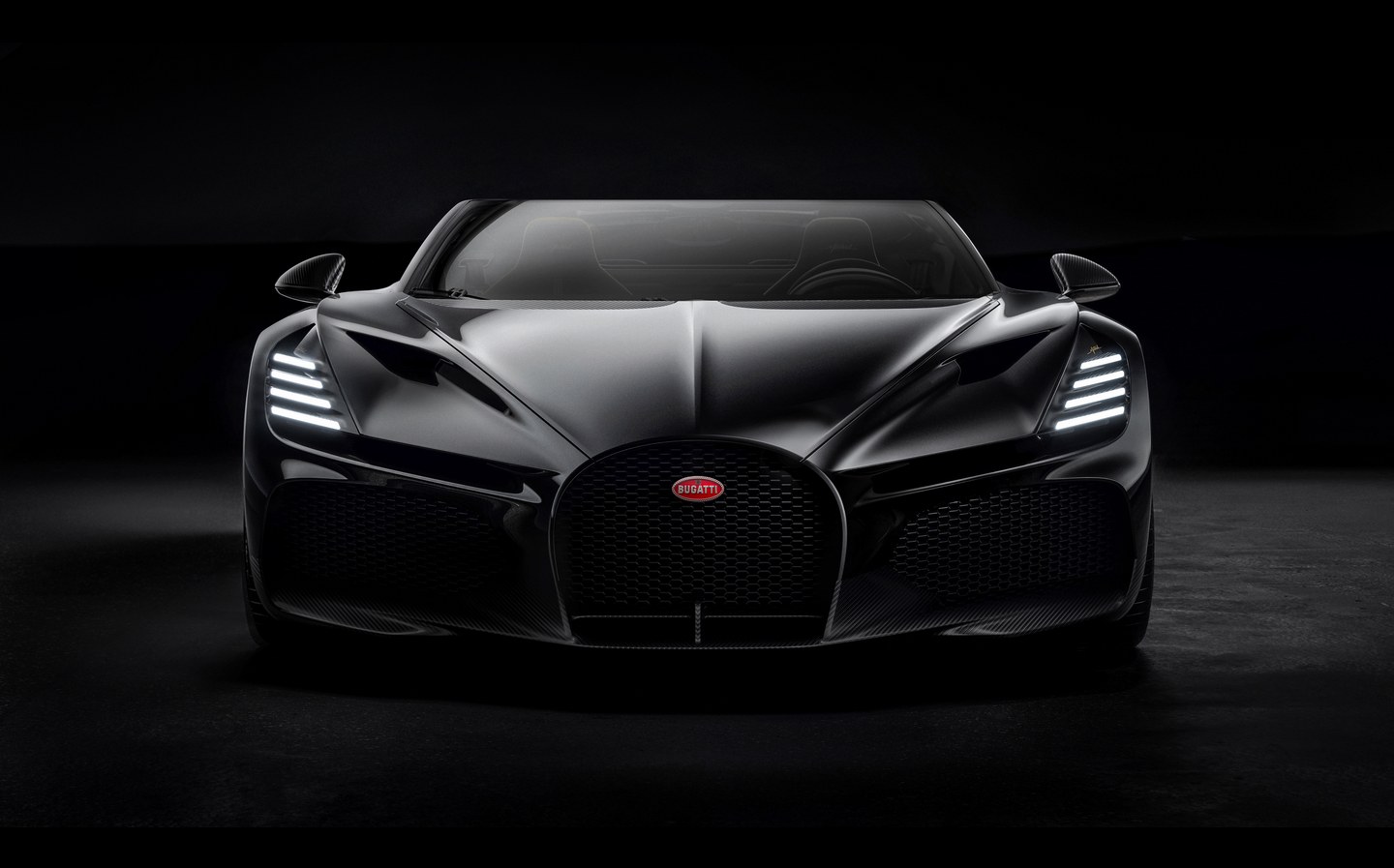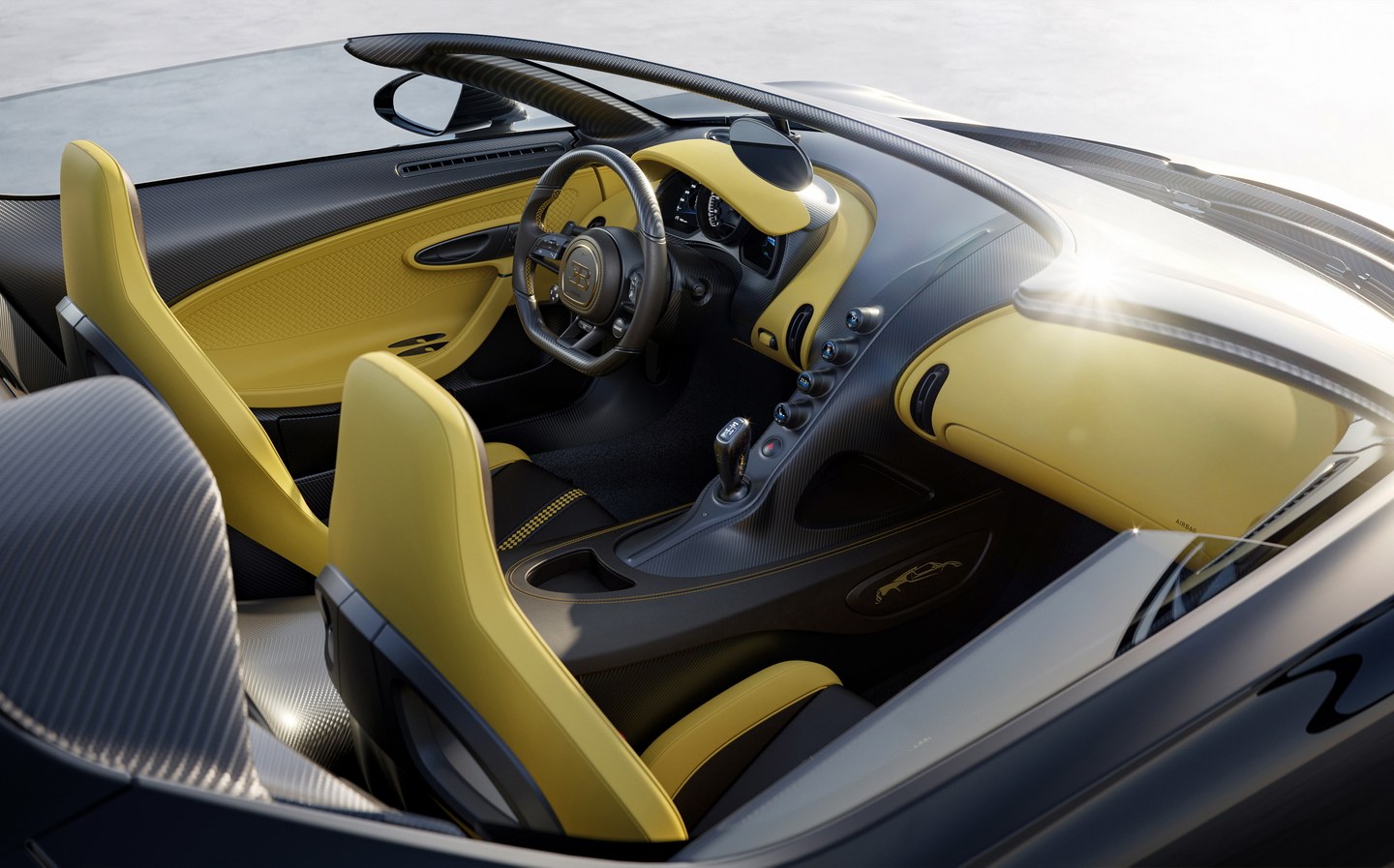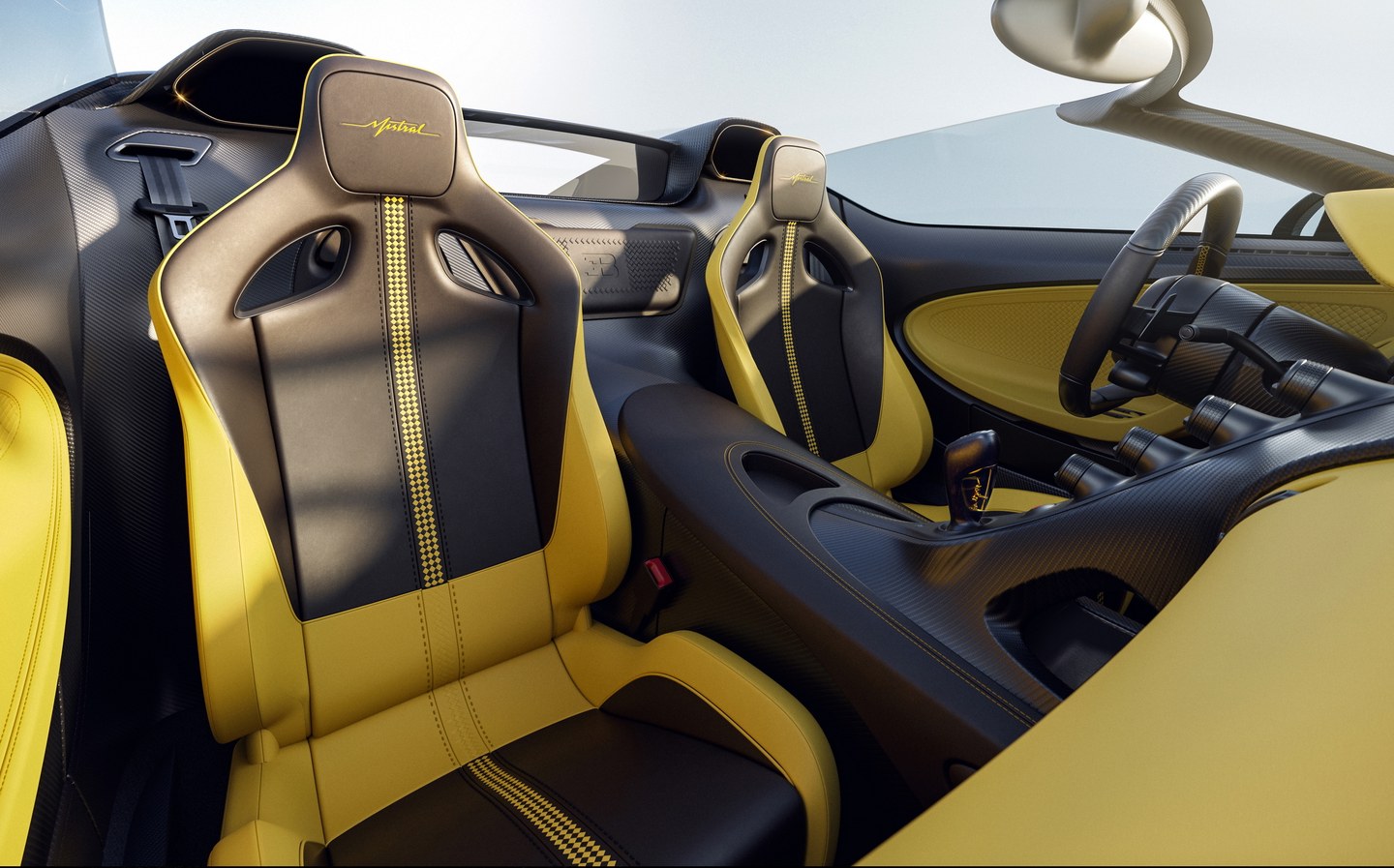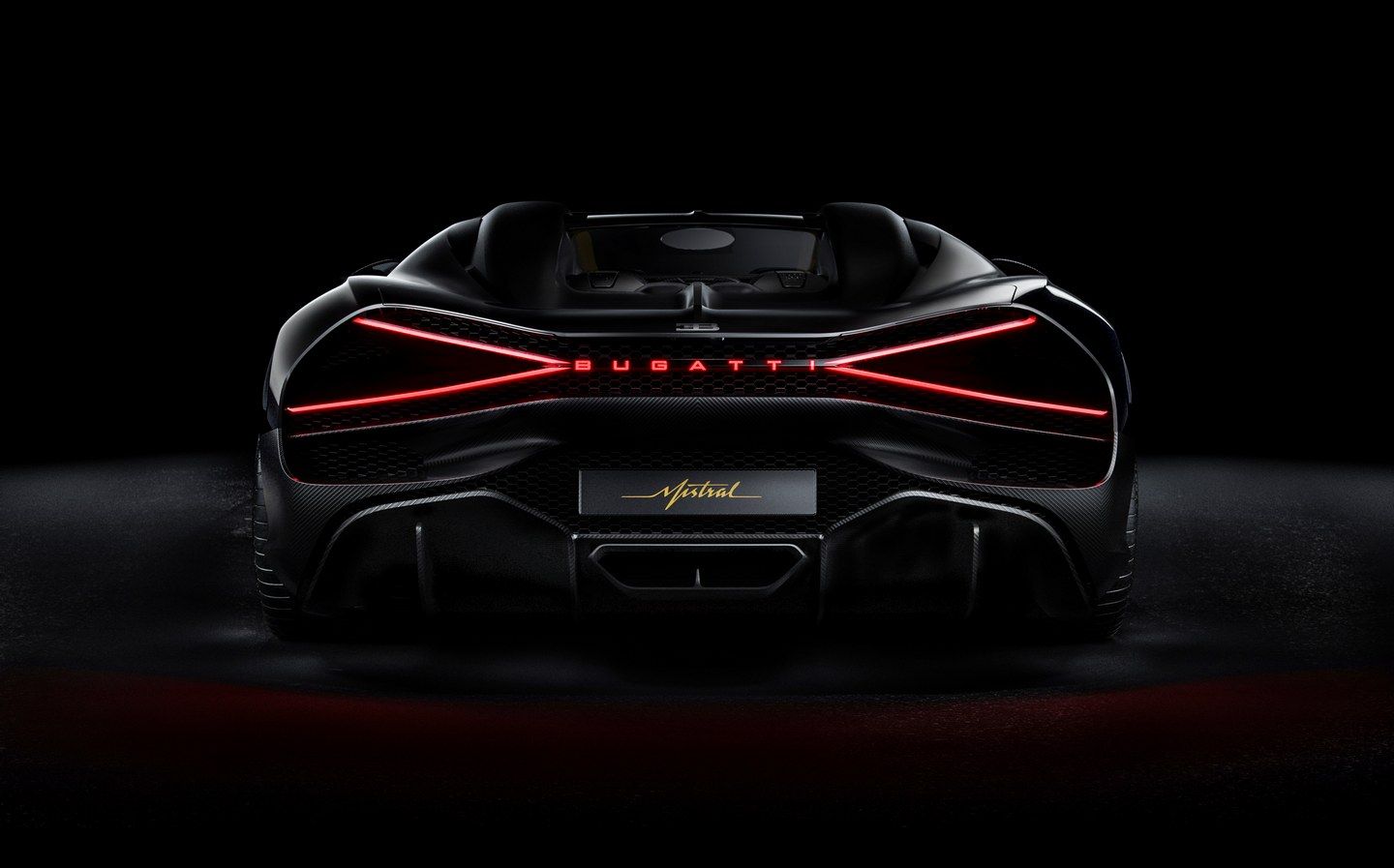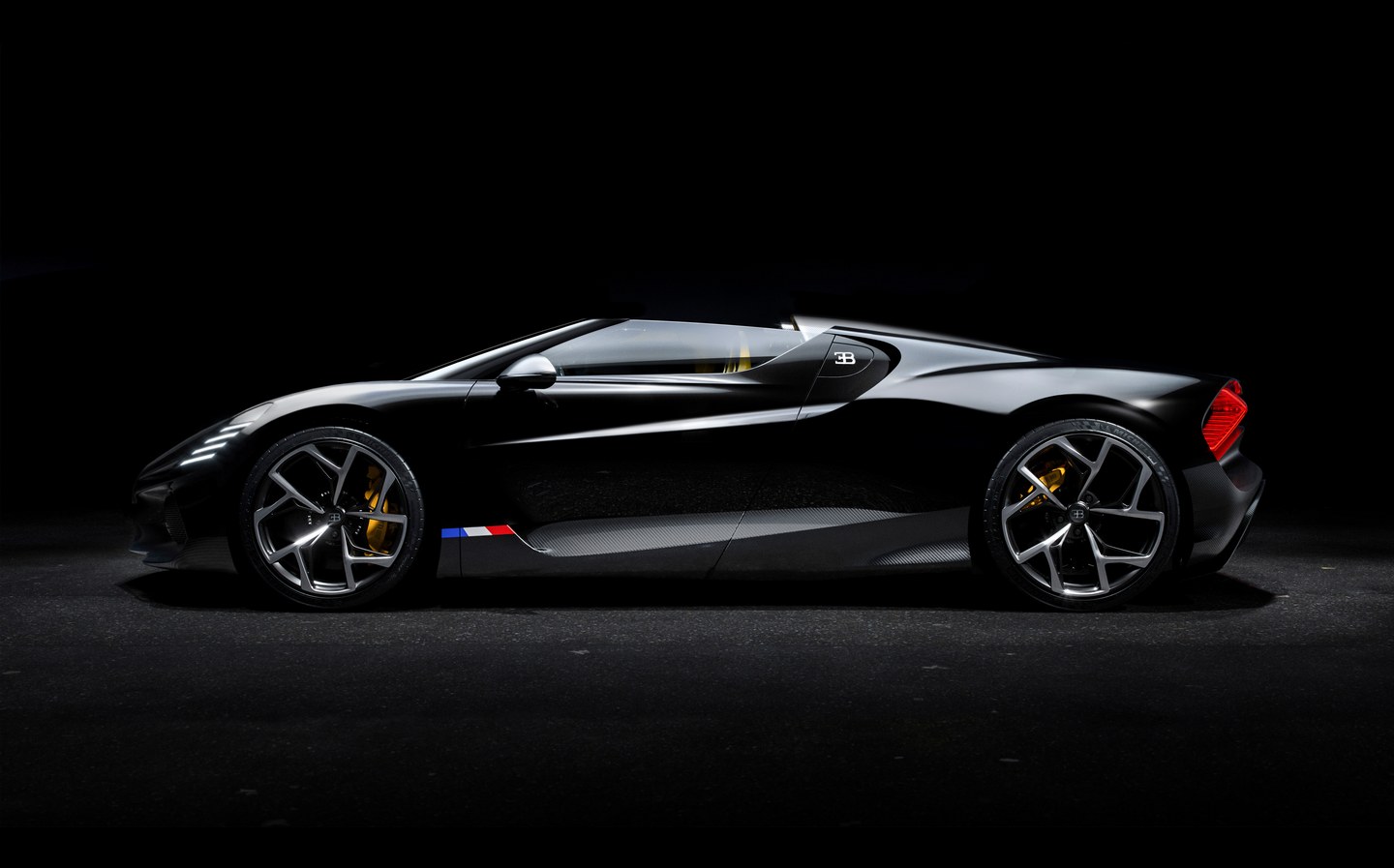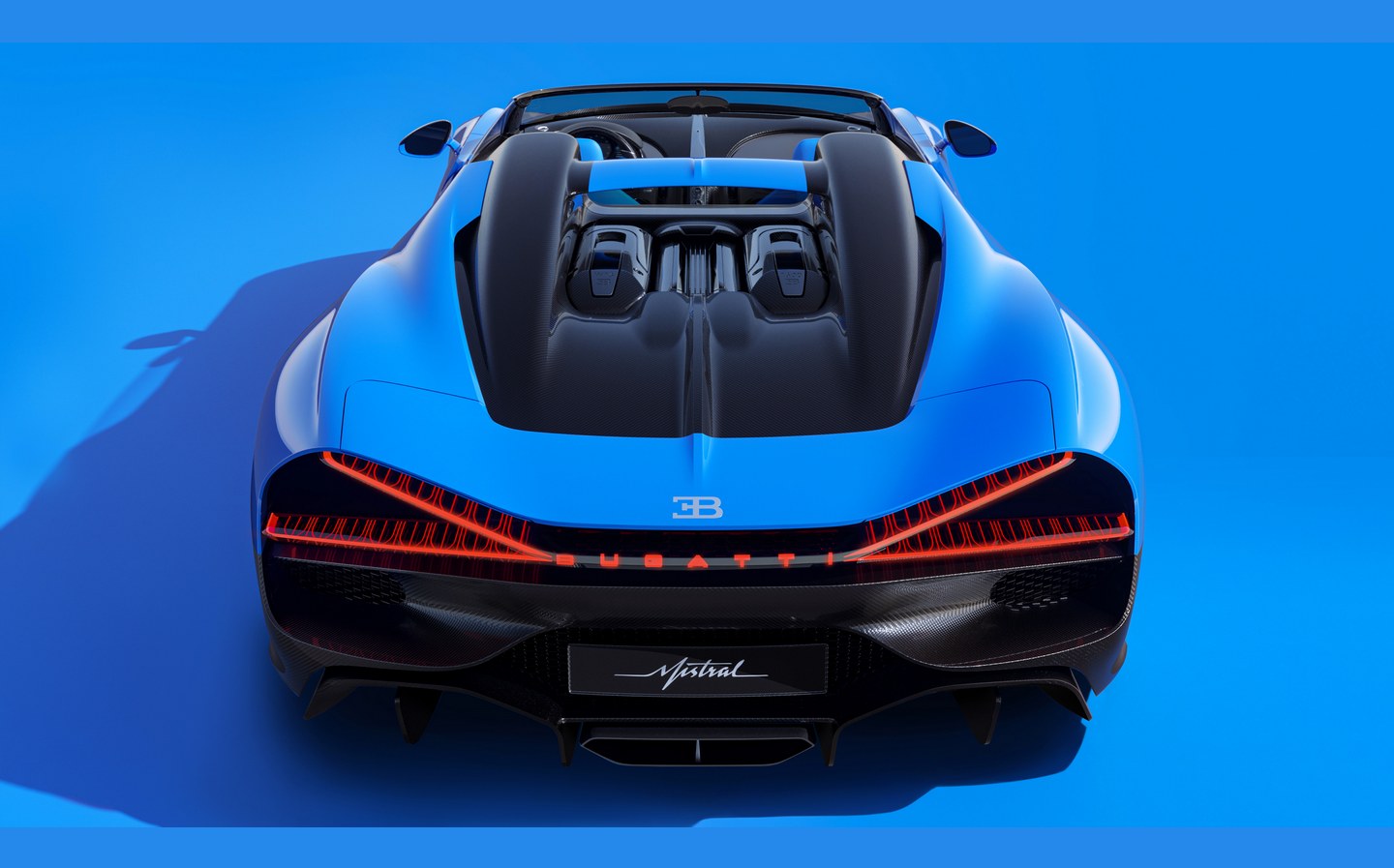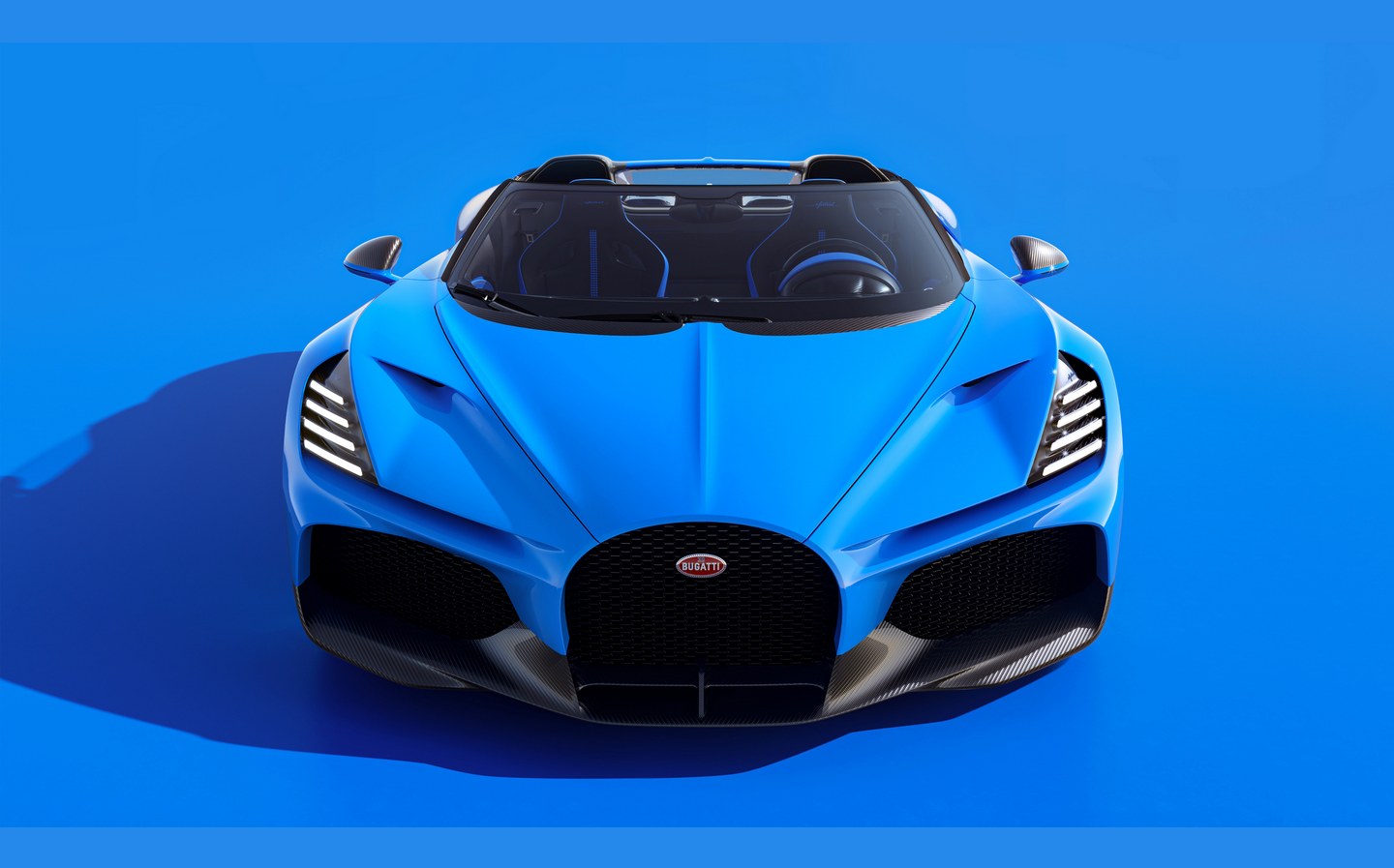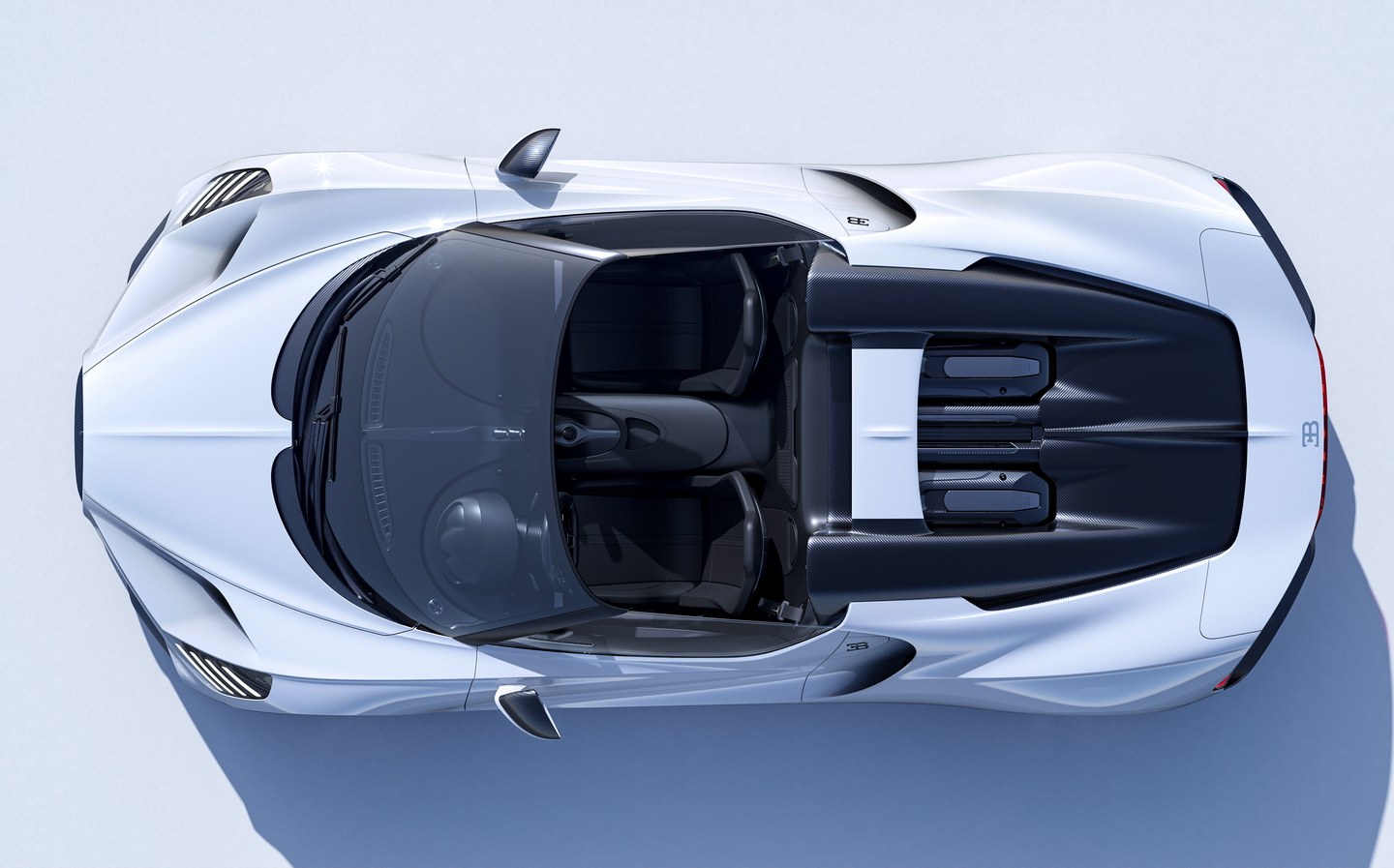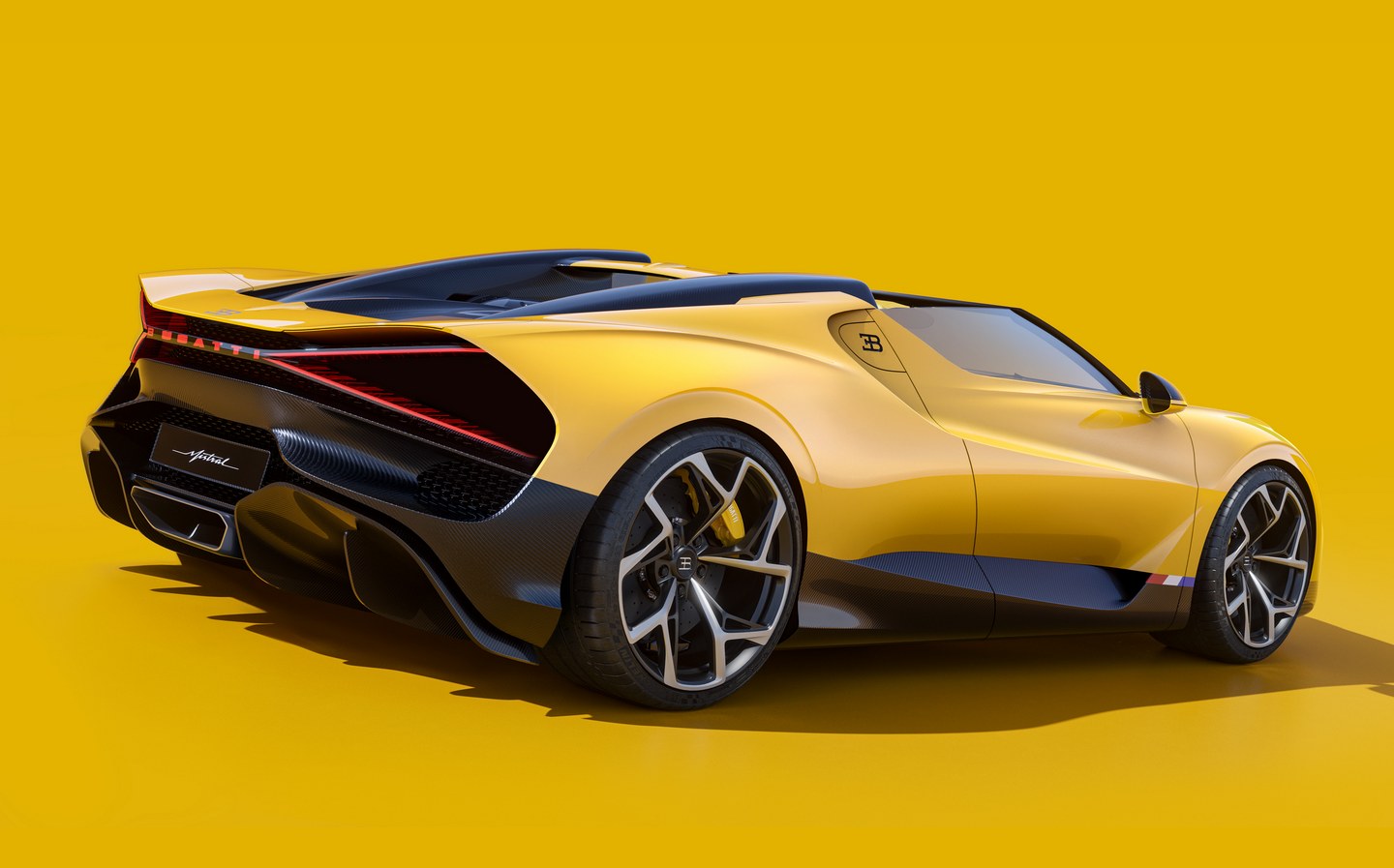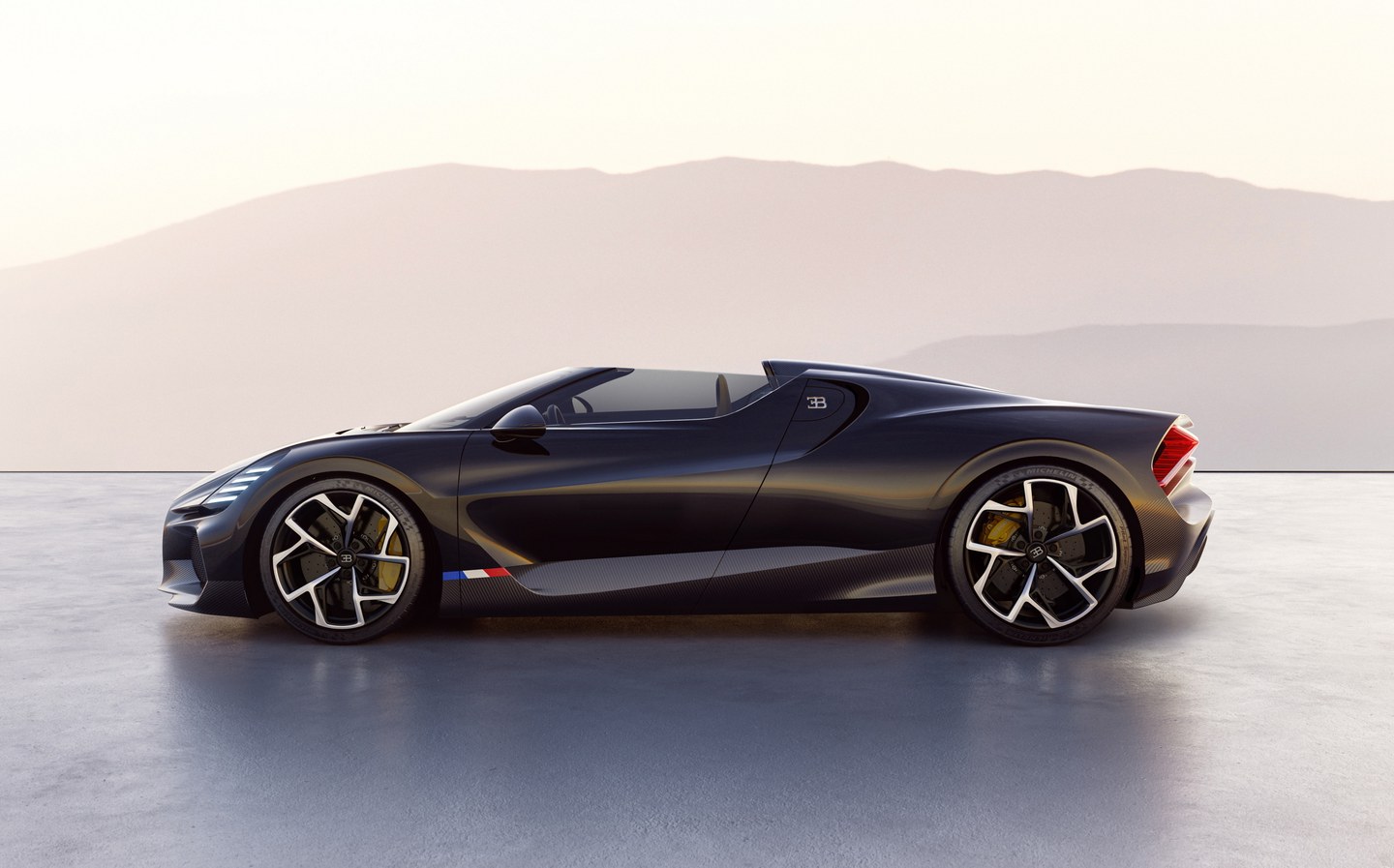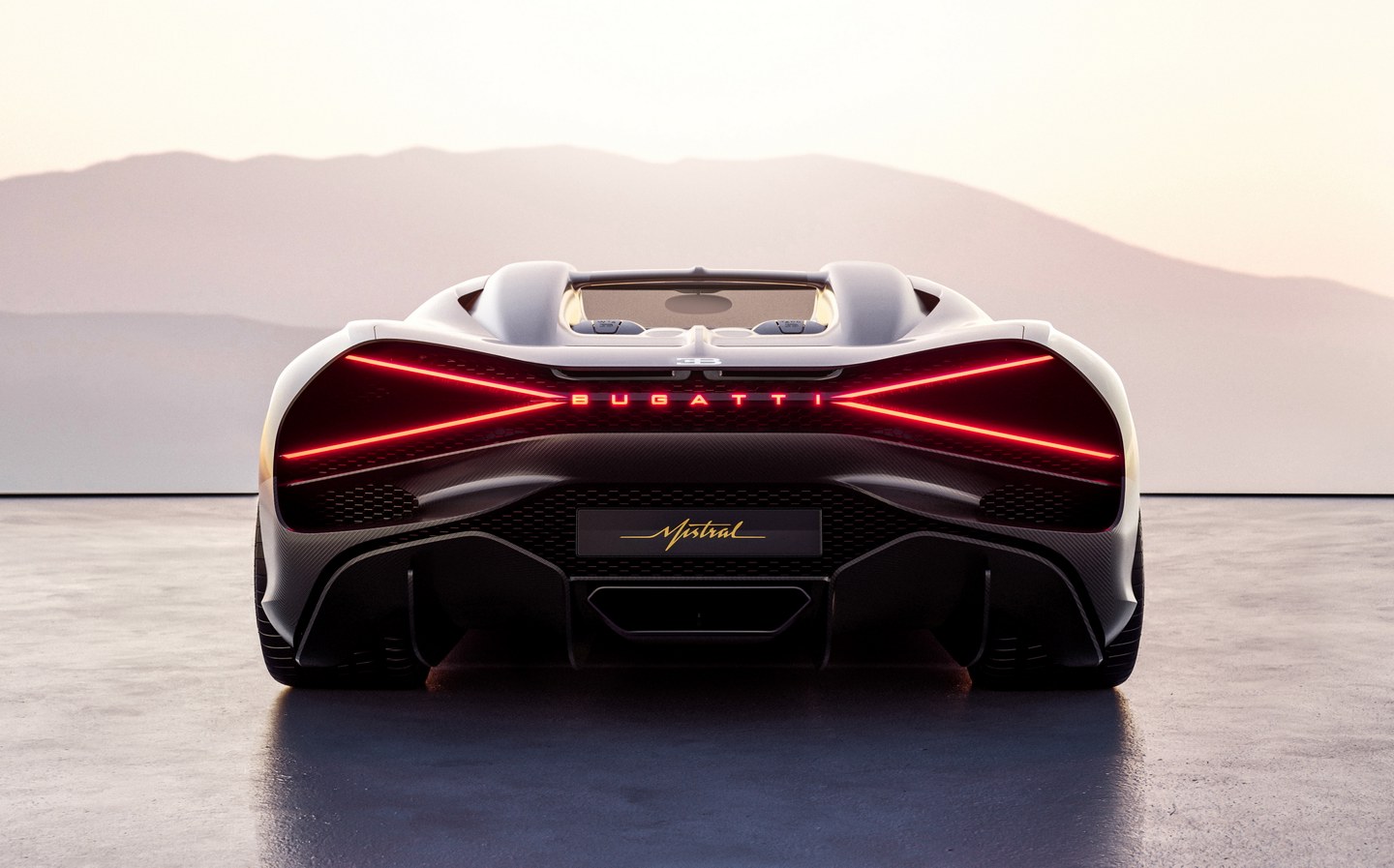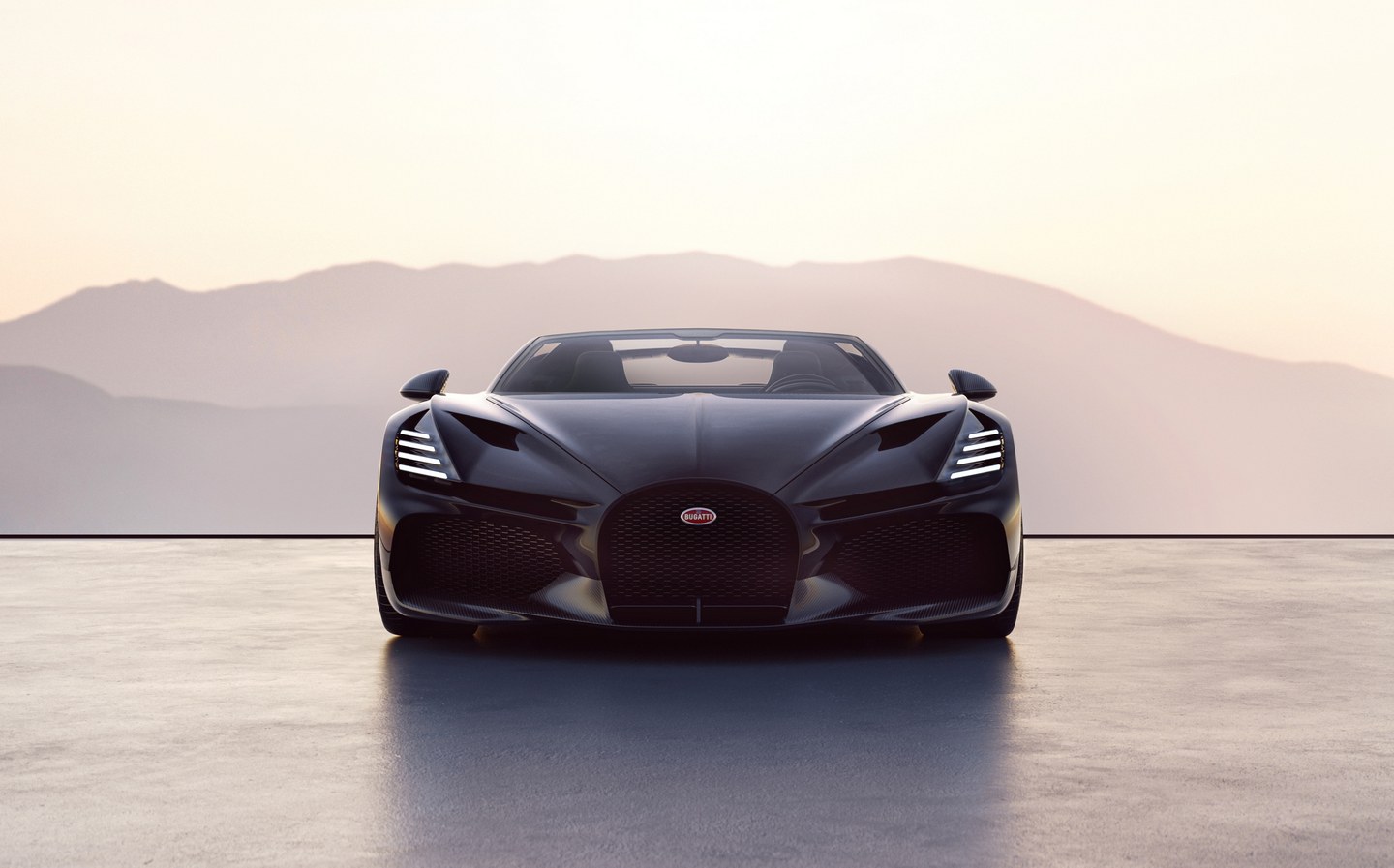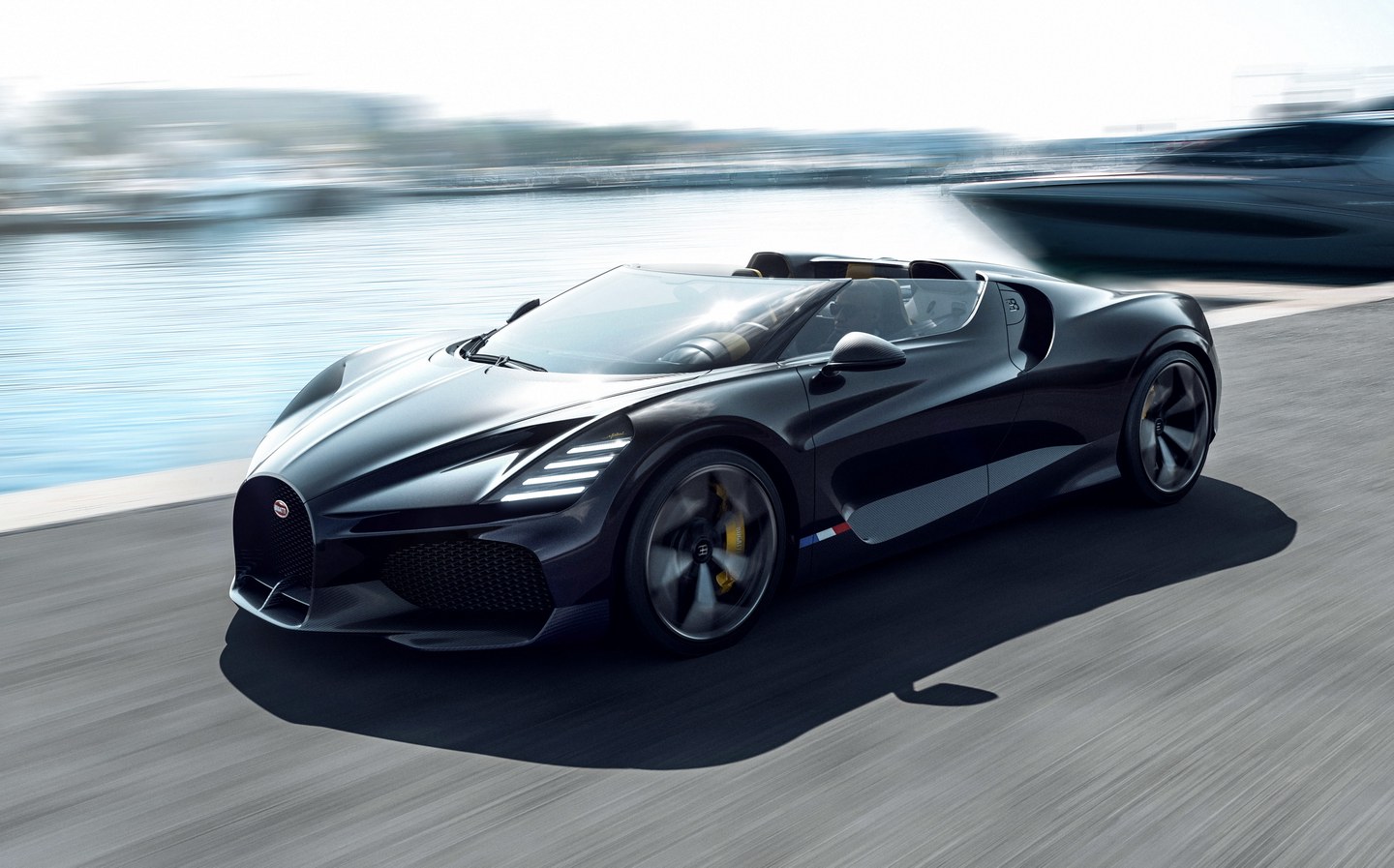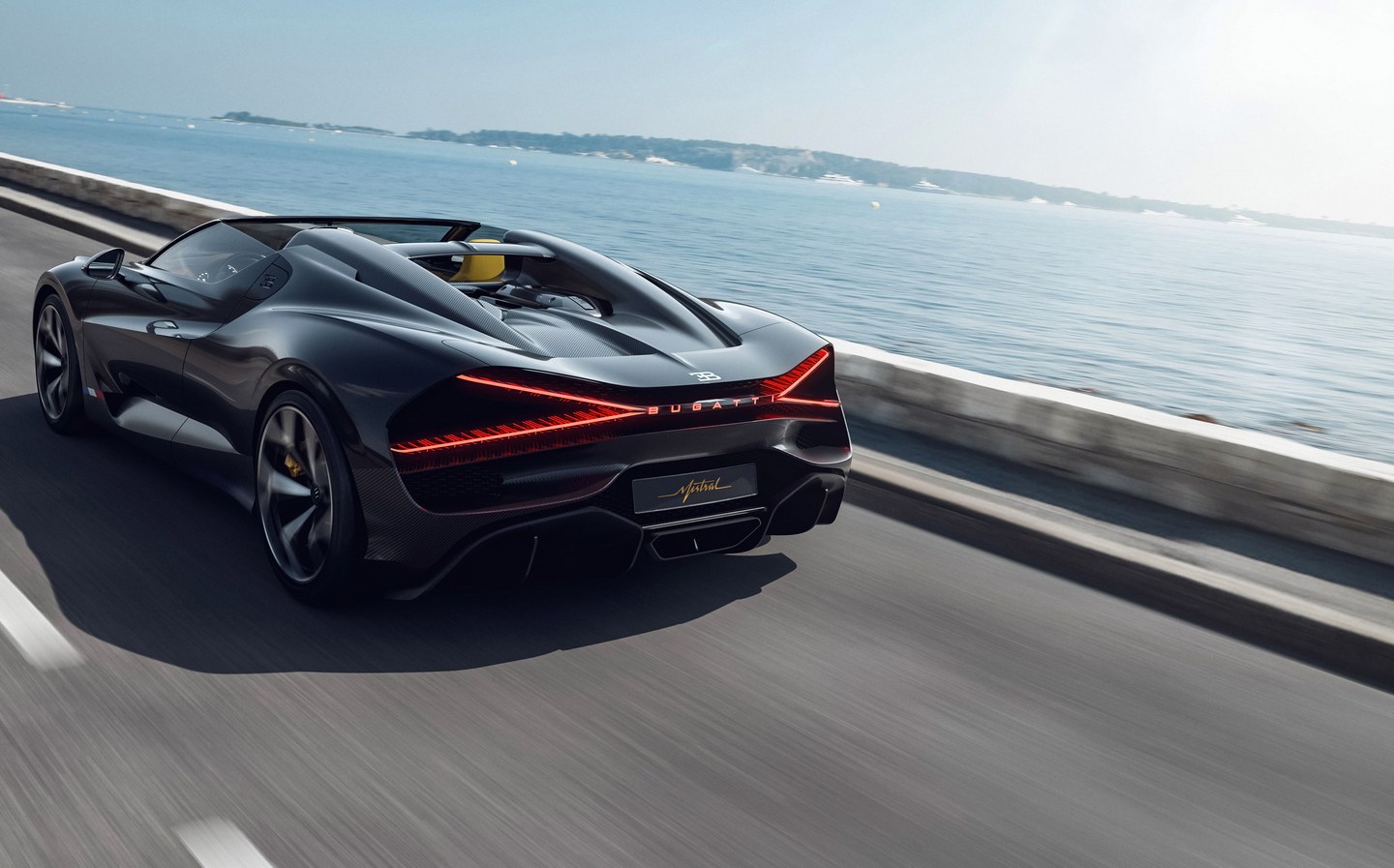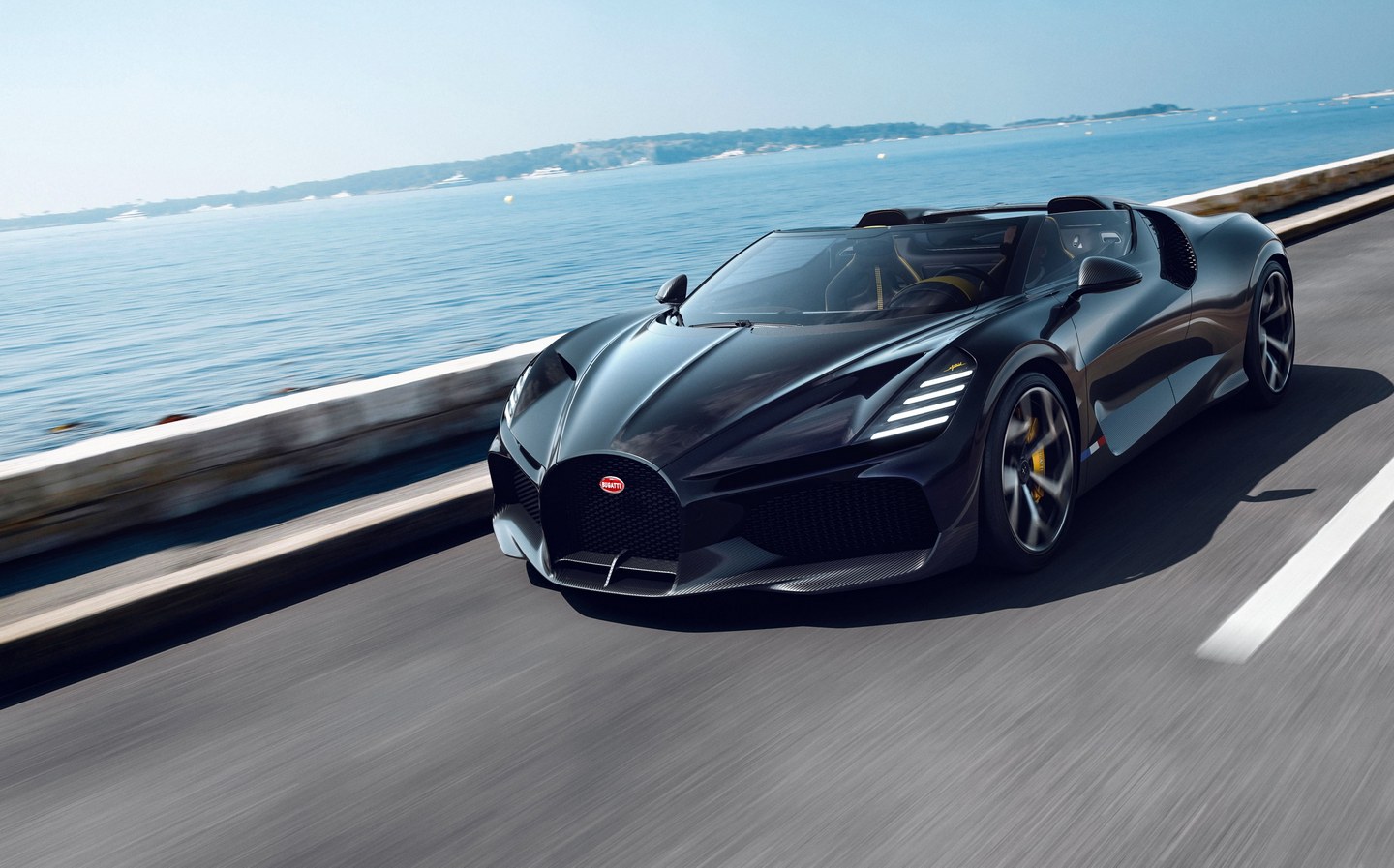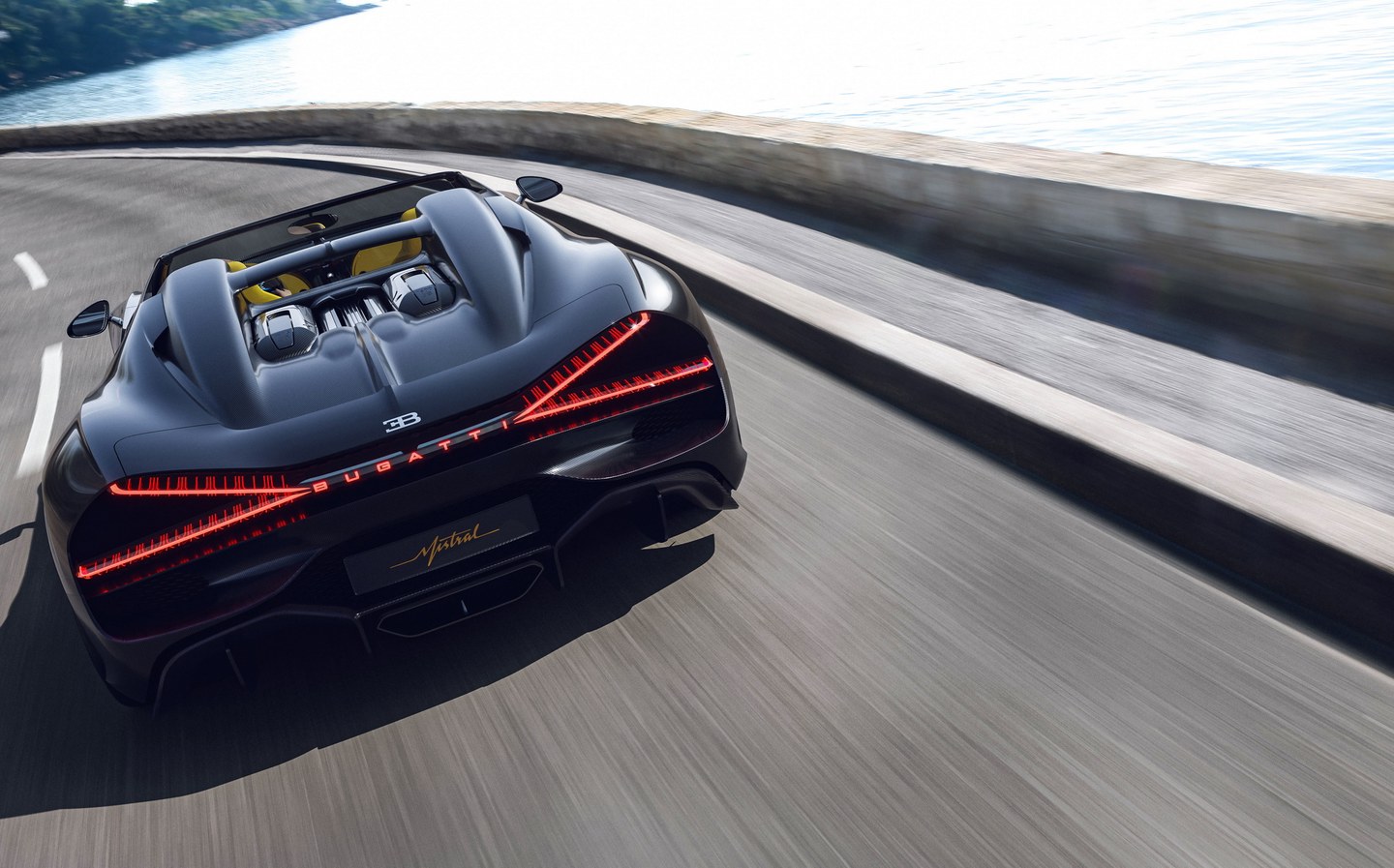End of an era: 1,578bhp Bugatti Mistral roadster marks final appearance for firm’s W16 engine
Sweet sixteen no more
Bugatti has revealed the W16 Mistral, a roadster that it says marks the final appearance in a road car of its legendary sixteen-cylinder engine, the unit that has powered all of the firm’s cars since the company’s rebirth in the early 2000s.
Unveiled at Monterey Car Week in California, and named after a wind that sweeps up the French Riviera, the Mistral is based on the Bugatti Chiron and its engine (developing 1,587bhp), specifically on that of the Chiron Super Sport 300+, a car that has, in testing, clocked more than 300mph.
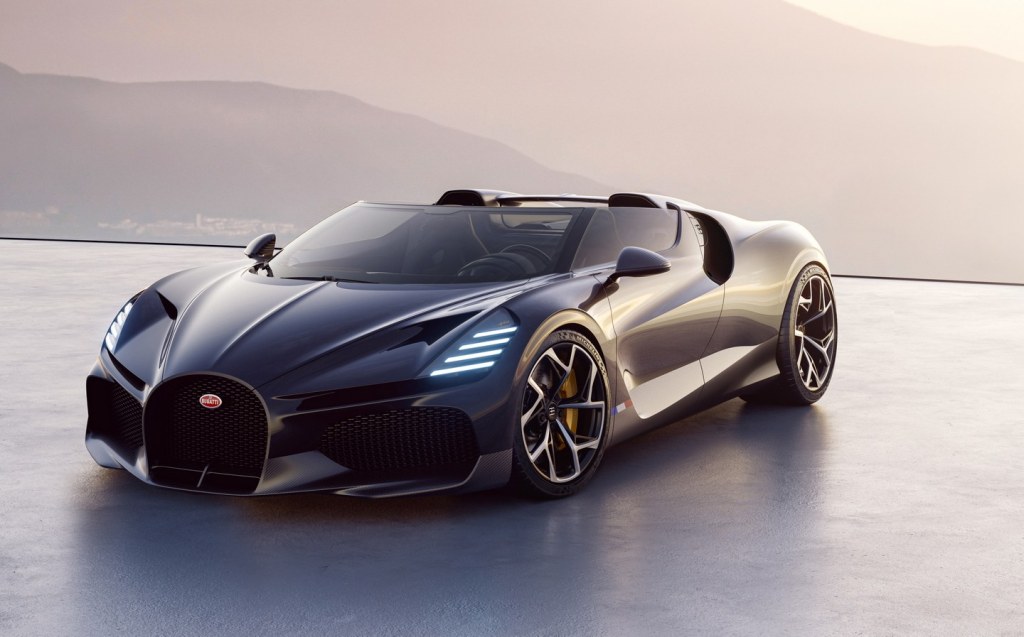
Because of the Mistral’s open-topped body, performance won’t quite be on a par with the Super Sport; with a targeted top speed in the region of 260mph, however, it could snatch back the world’s fastest convertible title from the Venom GT Spyder built by the small American firm, Hennessey.
“For the final roadgoing appearance of Bugatti’s legendary W16 engine, we knew we had to create a roadster,” said Bugatti’s CEO, Mate Rimac.
“Well over 40% of all Bugatti vehicles ever created have been open-top in design, establishing a long lineage of performance icons that — to this day — are revered the world over. In the Chiron era there had, to-date, been no roadster, so the introduction of W16 Mistral continues this legacy, driven by enormous demand from our clients for an all-new way to experience the mighty performance of our iconic engine.”
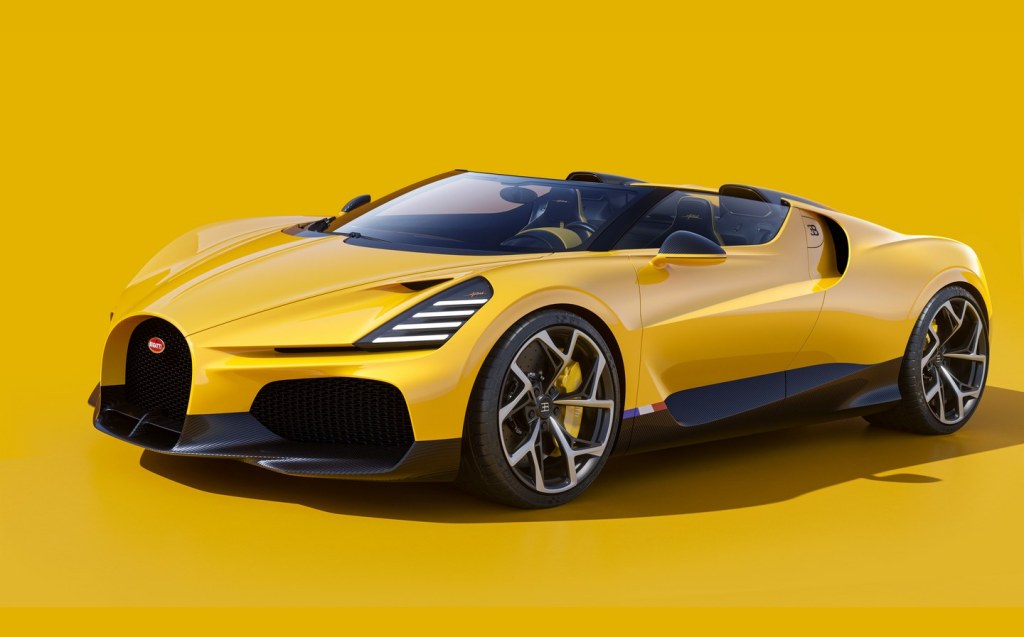
With a design inspired by the 1934 Bugatti Type 57 Grand Raid, a strikingly-styled black and yellow cabriolet currently residing in a museum in The Hague, the Mistral doesn’t just see the top lopped off a Chiron – a lot of engineering and styling work gone into making the new design work.
The overall looks are quite similar to those of the Chiron and the track-only La Voiture Noire, though the trademark horseshoe grille is wider to better channel air to the radiators.
The headlamps, with their four-light signature, are, according to Frank Heyl, Bugatti’s deputy design director, a nod to the Mistral’s four-wheel drive and four turbochargers, as well as serving the dual function of being shaped so as to funnel air into and out of the front wheel arches to reduce aerodynamic drag.
At the rear, there’s more to the lights than meets the eye. With their “X” shape modelled on that of the lights seen on the Bugatti Bolide hypercar, like the front lights they serve an aerodynamic as much as an illuminative purpose.
“The X-taillight,” explained Heyl, “serves the function of venting the side oil coolers through ducts connecting the triangular negative space in between the X beams to the side radiators.
“Therefore, a pressure drop is created between the side intakes and the outlets at the back of the W16 Mistral which helps to manage the mid-temperature cooling circuit of the mighty W16 most effectively.”
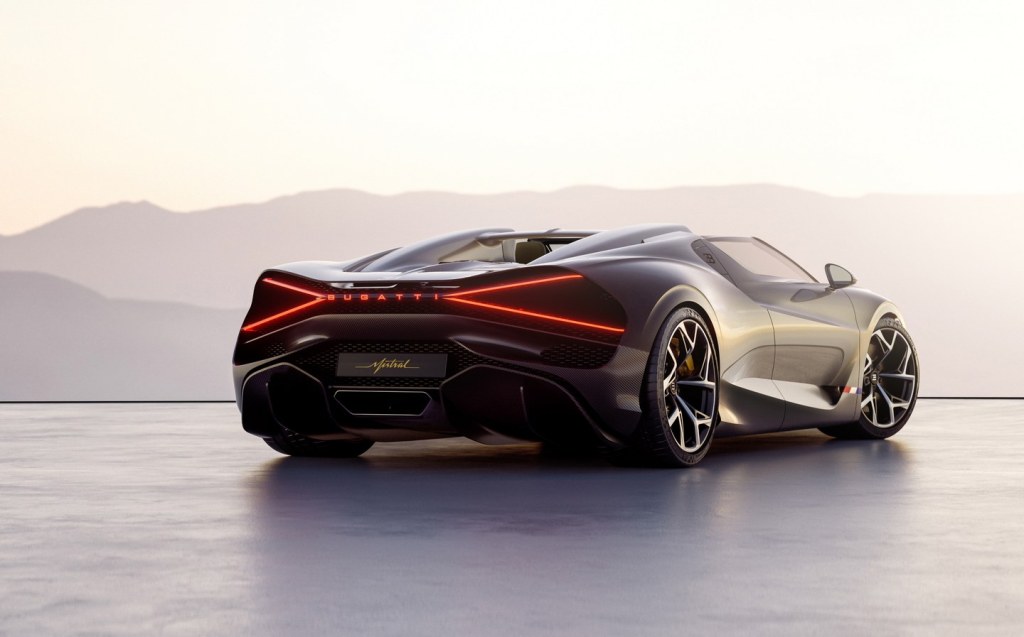
Also different to the Chiron is the fact that, because the carbon-fibre monocoque tub has been reshaped, it allows for a V-shaped wraparound visor-style windscreen that, though curved, isn’t curved so much as to distort the driver’s vision.
As a result of the changes to the design, the C-shaped side air intakes for the engine and the oil coolers are, unlike the Chiron, now separate, with air for the engine now being channelled through intakes on the roof behind the occupants’ heads, reminiscent in shape of the fairings seen on old sports cars, the Grand Raid included.
Those carbon-fibre roof intakes, also doubling as rollover hoops, should in theory generate a lot of noise to accompany that performance, delivering, at full speed, around 70,000 litres of air to the 8l engine every minute.
Like other Bugattis, owners have a near-infinite level of choice when it comes to interior furnishings, in choosing the leather and inlays, which have been tested, according to the company “with a vision of regular use over a hundred years into the future.”
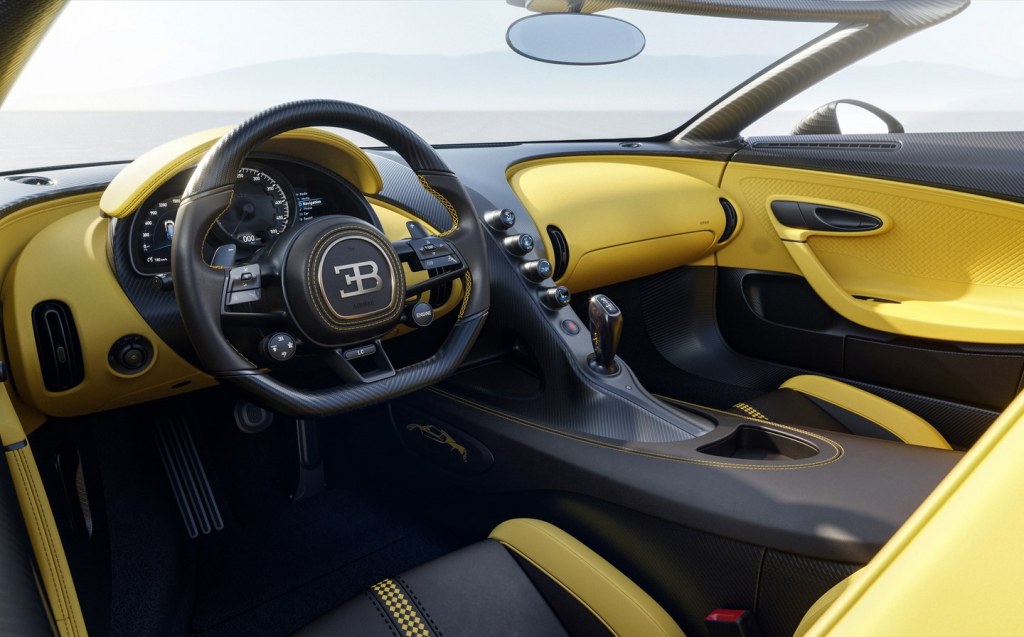
One little highlight of the interior though is the gear shifter, milled from a single block of aluminium and featuring a wood and amber insert with a sculpture of a dancing elephant locked within. The elephant is a miniature reproduction of a sculpture by company founder Ettore Bugatti’s brilliant and tragic younger brother, the sculptor Rembrandt Bugatti, who committed suicide in 1916, aged just 31.
The inclusion of the sculpture in the Mistral is a nod to its use in the convertible version of the enormous Type 41 Royale, Bugatti’s most luxurious car of the late twenties and early thirties featuring a 12l straight-eight engine, the ambition of which makes it the forebear of the W16 according to the company.
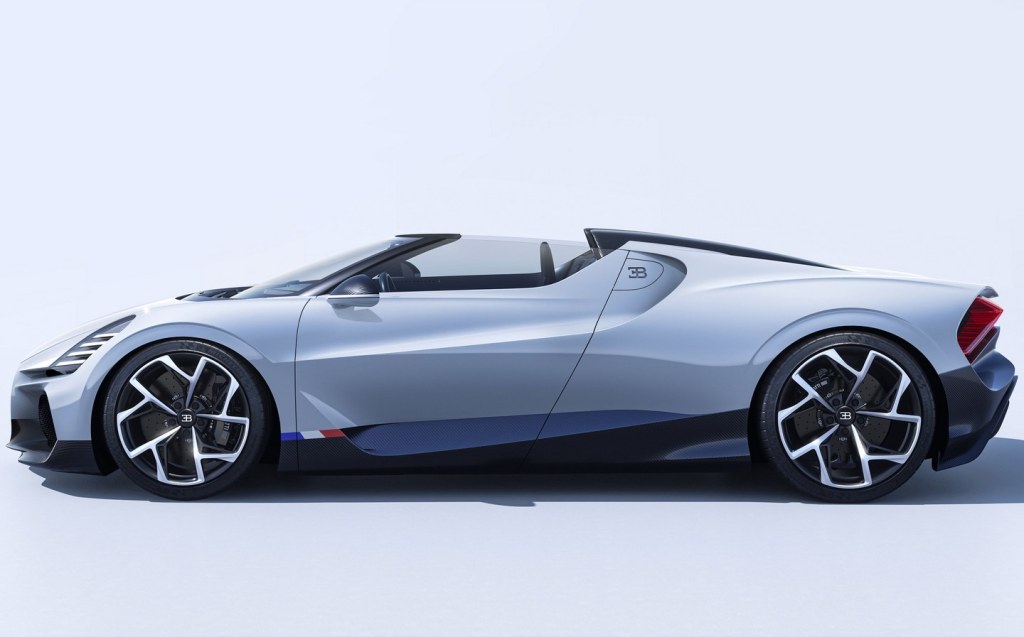
The design of the W16 Mistral was revealed to select Bugatti customers ahead of its official unveiling at Monterey, meaning that all 99 examples due to be built are already sold out.
First deliveries are expected in 2024 with prices around the €5m (£4.2m) mark.
Related articles
- After reading about the new Bugatti Mistral, you might find it interesting to read how Bugatti and Rimac joined forces to create new hypercar company
- Check out how you can delight your children with the Bugatti Baby ride-on toy car
- Did you hear about the spectacular new Porsche 911 GT3 RS?
Latest articles
- Bedeo Defender 110 2024 review: Does electric Landie with in-wheel motors make for a perfect off-roader?
- F1 2024 calendar and race reports: What time the next grand prix starts and what happened in the previous rounds
- BYD Seal U 2024 review: Chinese brand adds plug-in hybrid SUV to its electrified line-up
- New Mini John Cooper Works revs up for Nürburgring 24-hour race debut
- Ineos Grenadier Quartermaster 2024 review: British pick-up is a tough mudder but too flawed to be a real workhorse
- Mini Cooper SE 2024 review: All-new electric hatchback is playing to the crowd
- Jeep Wrangler 2024 review: Impressive off road but you’d still have to be a committed contrarian to buy one
- Around 500 Ford workers in UK could go on strike over cost-of-living pay dispute
- Durham solar car team to take part in 24-hour race with smart tyres and night-driving solution


